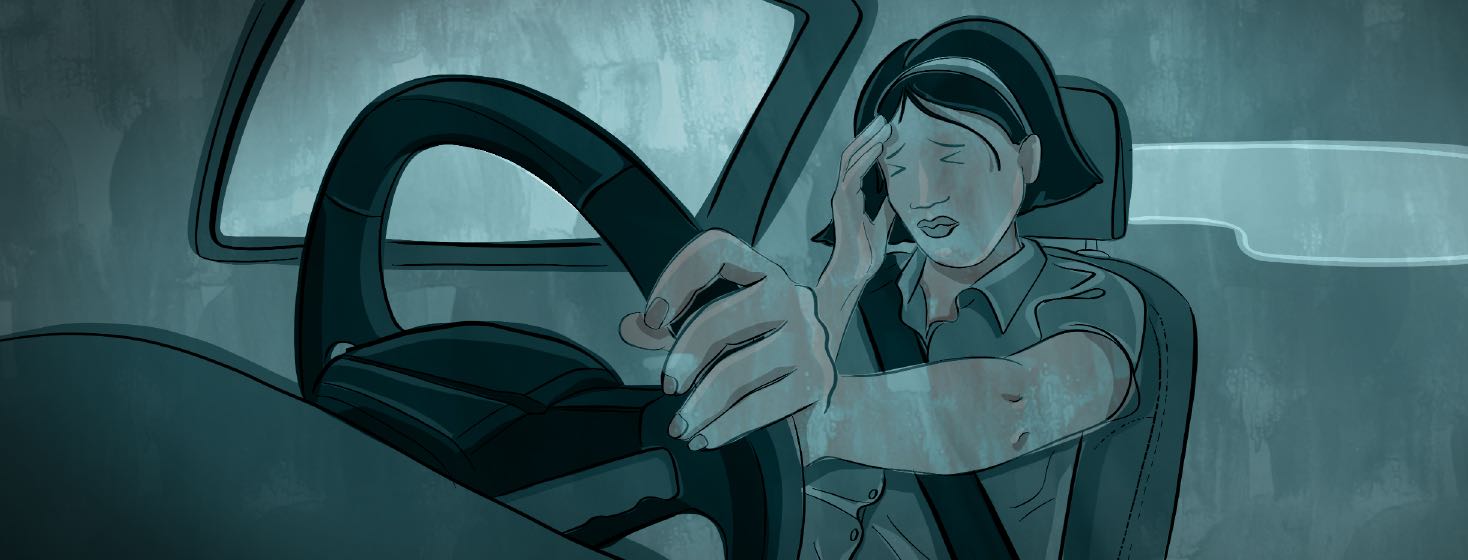A Sight for Sore Eyes - Long Distance Driving to See the Family
How will I manage my upcoming drive to see my son and his young family when the round trip to visit them is 880 miles?
Long-distance driving and chronic dry eye don’t mix.
Long-distance driving and dry eye
As of my writing this, Sydneysiders are legally able to visit regional areas now, after lockdown, but am I up to this drive, especially in one day? I could stay overnight in a motel, but I don’t want to make it a two-day trip (four days including the return drive) and I’d rather spend that money on presents for the family.
There are no flights to their town, and the train doesn’t go there, so I really don’t have much choice. I’m going to drive. I’ve done it before. But this time (after my chronic dry eye diagnosis) I’m going to think about the problems I’ve had in the past and do it differently.
On previous trips, I wondered why I had to keep stopping so often, and thought I was just tired because I’d woken up early. Sometimes I’d only get about an hour down the road before I had to stop, because my eyes were dry and sore.
It was made worse because I was either on a six-lane highway, with very few pull-over spots, or a two-lane country road, also with nowhere safe to stop. If I did manage to put in some drops, my eyes were sore again in no time, and I really didn’t know what to do.
Potential driving perils
The movement of the air from the car air conditioner always worried my eyes no matter which way I pointed the vents.
I can’t stand it on my face, and even if I point it at my feet, it still creates “waves” and my feet get cold! The temperatures in my son’s town often exceed 105 degrees F. There’s no going without air conditioning around here!
Other potential hazards on the trip are herds of cattle or sheep with their drover and his dog. They’re likely to appear at any time, wandering down the middle of the road, and they definitely have the right-of-way!
If I’m ever running behind time, and the huge red sun starts to sink over the plains as I drive towards it, glare isn’t the only problem. I also have to watch out for kangaroos and emus. This is the time they emerge, and if the weather has been dry, they love the green grass at the edge of the road. They jump out from nowhere and are a real danger.
6 long-distance driving tips
I seem to have more problems than solutions, but this is what I’m planning to try for my next trip.
Before I leave home, I must follow the procedure given to me by my optometrist. If I skip this procedure, I might save a few minutes in the morning, but I’ll lose a lot more time during the trip.
- Use my microwaveable mask for 5-10 minutes (and remember to pack it), followed by my lubricating drops and my “oily” drops.
- Keep drinking water during the day, but not too much coffee.
- Pack more than one lot of drops; one for my handbag and another for the car - so that I’m never without them.
- Take my wet facecloth in a plastic bag and some extra water in a bottle to re-wet it. This will have to replace the microwaveable mask until I arrive.
- Make sure that when I stop for any reason, I take the time to use the facecloth and the drops.
- Get polarised wraparound sunglasses to keep out the air-conditioning and cut the glare, but still enable me to see the sheep, cattle, kangaroos, and emus!
After nearly a year of not seeing my grandchildren because of Covid, they will indeed be a sight for sore eyes and a wonderful reward for my long trip. I still won’t get there in time to pick them up from school, but I might just get there in one day - with me, the wildlife, and the cattle all in one piece.

Join the conversation